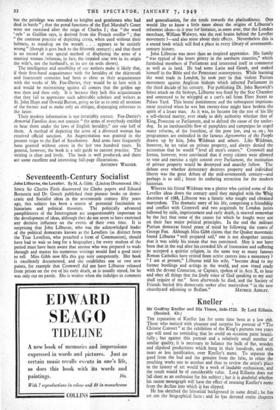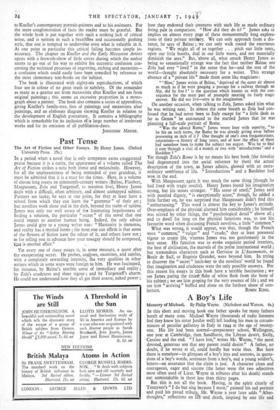Kneller ,
Sir Godfrey Smeller and His Times, 1646-1723. By Lord Killanin. (Batsford. 42s.)
THE reputation of Kneller has for some time been at a low ebb. Those who noticed with pleasure and surprise his portrait of "The Chinese Convert " at the exhibition of the King's pictures two years ago will need no reminding that he could on occasion paint beauti- fully; but against this portrait and a. relatively small number of similar quality, it is necessary to balance the bulk of flat, wooden and slipshod productions which -hang in their hundreds, and with more or less justification, over Kneller's name. To separate the good from the bad and Ihe genuine from the false, to relate the resulting works one to another and thus to review the artist's place in the history of art would be a work of laudable enthusiasm, and the result would be of considerable value. Lord Killanin does not fall short as an enthusiast for his subject ; but it is doubtful whether his recent monograph will have the effect of rescuing Kneller's name from the decline into which it has slipped.
He has sketched the historical background in some detail ; he has set out the biographical facts : and he has devoted entire chapters
to Kneller's contemporary portrait-painters and to his assistants. For the mere conglbmeration of facts the reader must be grateful. But the whole book is put together with such a striking lack of critical sense, .and is written in such a breathless and occasionally gushing style, that one is tempted to undervalue even what is valuable in it. At one point in particular this critical failing becomes simple in- accuracy. The chapter on Kneller and the Early Mezzotint Artists opens with a firework-show of little errors during which the author seems to go out of his way to exhibit his eccentric confusion con- cerning the technical processes of engraving, etching and mezzotint— a confusion which could easily have been remedied by reference to the most elementary text-books on the subject.
The book is illustrated with eighty-six reproductions, of which four are in colour of no great truth or subtlety.. Of the remainder as many as a quarter are from mezzotints after Kneller and not from original paintings ; this seems an excessive proportion in a mono- graph about a. painter. The book also contains a series of appendices, giving Kneller's family-tree, lists of paintings and mezzotints after paintings, and an elaborate diagram showing Kneller in relation to the development of English portraiture., It contains a bibliography which is remarkable for its inclusion clt:a large number of irrelevant works and for its omission of all publiCation-dates. •
JONATHAN MAYNE.







































 Previous page
Previous page